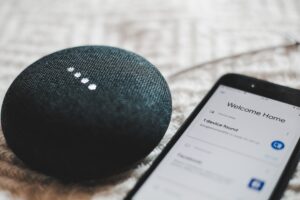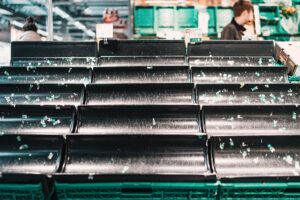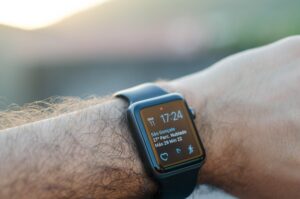COVID-19 has been a Black Swan event of unimaginable magnitude, and businesses have been forced to adapt and adopt new technologies in the pursuit of business preservation. In this blog post, Tata Communications’ Alok Bardiya, Head – Internet of Things (Business Unit), explains how the Internet of Things (IoT) has emerged as a formidable and the most viable solution as we reimagine the future of work, to ensure business continuity and uphold employee safety.
As India rallies and we move past the initial response phase, we now face a different kind of challenge. While staging India’s back to business strategy, we are not only saving lives but now need to save livelihoods.
Cloud usage and remote collaboration witnessed accelerated adoption equivalent of a few years in a matter of a few weeks, as they powered work from home seamlessly. Similarly, as we graduate to the next phase and attempt emerging out of our homes in a staggered manner, we will need to rely on a different set of technologies to assist us.
Before we move towards the technology, we must assimilate the sea-change in philosophy that has erupted. Work from home will probably come out as a mainstay as compared to its fringe and good to have status earlier. As we absorb and align to this industry wide change in philosophy as the new normal, we must take lessons and apply it to the next phase at hand. Just like cloud and collaboration tools powered remote working, IoT can power our back to business. Hence, we must not view the solution as a temporary bridge to resume operations but understand it from a holistic long-term perspective to realign the way we operate.
Let’s take a look at the manufacturing units that have resumed crucial operations are now facing the challenge of keeping their employees safe and businesses solvent. To navigate this, manufacturers are establishing risk mitigation programs and redesigning their shop floors with fewer workers to reflect the staggered shifts and working around the principles of physical distancing.
“This process has accelerated the curiosity towards solutions that can be the guiding light on productivity, safety, energy management, automation and even predictive and remote maintenance.”
While IoT will address all of the above, reimagining our back to business does not just stop there. More than the obvious analytics led efficiencies offered by the technology, businesses will be better suited to drive meaningful change if they fully absorb the philosophy that IoT will bring in. What does that mean? It means a cultural change at a pan organisational level, where old systems must give way to newer mind-sets driving new business values. It means realising the opportunity to build an industry 4.0 environment with a connected ecosystem where various processes, departments and machines can communicate with one another. Beyond businesses, as good governance makes headway, city wide adoption will see solutions like smart metering, smart lighting become mainstream to drive sustainability.
Business continuity with IoT
 Many business leaders view IoT as a critical lever, one which if integrated correctly will not only ensure a safe and secure return to work, but also birth recurring dividends in the years to come. For instance, consider the supply-chain hindrances visible with shortages of essential supplies and empty supermarket shelves. The backstory reveals the global supply chain disruption, production slowdown, and shortage of raw materials and sub-assemblies.
Many business leaders view IoT as a critical lever, one which if integrated correctly will not only ensure a safe and secure return to work, but also birth recurring dividends in the years to come. For instance, consider the supply-chain hindrances visible with shortages of essential supplies and empty supermarket shelves. The backstory reveals the global supply chain disruption, production slowdown, and shortage of raw materials and sub-assemblies.
In this scenario, IoT can facilitate a real-time view of production programs, inventories, and expected delivery times between all supply-chain participants while mitigating supply chain risks. Signals from connected machines supported by geolocation tags can offer insights on the status of raw materials in the factory and the location of the upcoming supply.
These insights can also help organisations implement a holistic approach to optimise production, inventories, and transport utilisation.
“Analytics coupled with algorithms on asset conditioning will optimise machines settings and adjust production schedules to integrate any change in demand or supply-chain disruption.”
Securing the Employees and the Workplace
Against this setup, IoT outshines at driving vigilance with connected sensors mapping the working environments. These sensors can monitor and analyse everything, from the well-being of employees to factory infrastructure, equipment, and location.
In this context, it is important to make note of another philosophical change. The goal of automation today has shifted from ‘Doing more with less’ to ‘Sustainability and smooth operations. Wearables, such as smart watches can be combined with environmental sensors to monitor employees’ safety as well as the environment, they are working in. By tracking physical fitness, such as heartbeat and skin temperature, sensors help in early detection of potential problems and health conditions, basis which employers can take the necessary preventative action. In a hypothetical and undesirable scenario, if an employee tests positive for COVID-19, organisations can use positioning data from the wearable devices to notify other employees who might have come in proximity. Further, access cards and other wearable devices can also help in informing the management about under-manned areas in case of employee unavailability.
The road ahead
Even after the pandemic abates, manufacturers will only remain keener to reinvent and reimagine insulating against any more uncertainty. Organisations will have to expedite their implementation of new strategies along the entire supply chain to avoid future disruptions and build resilience.
Here on, the private sector will need to coordinate closely with the public sector to forge plans that are essential to both public safety and the solvency of the workforce, while keeping the lights on the operations. The utilitarian nature of solutions will be viewed from a broader lens for its capability to empower against a number of scenarios.
“IoT will own this all-encompassing duty and bring us closer to a connected ecosystem and its automation will bring us into closer working relationships with machines and AI.”
It is only natural that IoT will hereon be a key pillar of the digitization journey. It is this change in culture and philosophy at an industry level which will not only ensure a safe and successful return of our economic drive, but also safeguard against future setbacks.
Discover more about how the Internet of Things is making the world a better place.
Transformational Hybrid SolutionsOur cloud-enablement services offer the best performance on your traffic-heavy websites or mission-critical applications.
Core NetworksTata Communications™ global IT infrastructure and fibre network delivers the resources you need, when and where you need them.
Network Resources
Unified Communications As A ServiceBreak the barriers of borders efficiently and increase productivity with Tata Communications’ UC&C solutions.
Global SIP ConnectEmpower your business with our SIP network and witness it grow exponentially.
InstaCC™ - Contact Centre As A ServiceCloud contact centre solutions for digital customers experience and agent productivity.
DIGO – Communications Platform as a ServiceDIGO is an in-network cloud communications platform, enabling you to power up converged contextual human-to-everything conversations globally.
Unified Communication Resources Case studies, industry papers and other interesting content to help you explore our unified communications solution better.
IoT SolutionsThe Internet of Things is transforming the way we experience the world around us for good. Find out more about our Internet Of Things related solutions here.
Mobility SolutionsTata Communications’ mobility services enable your enterprise to maintain seamless communication across borders, with complete visibility of cost and usage.
Mobility & IoT Resources
Multi-Cloud SolutionsWith enterprises transitioning to a hybrid multi-cloud infrastructure, getting the right deployment model that yields ROI can be a daunting task.
Cloud ComplianceCompliant with data privacy standards across different countries and is also designed to protect customers’ privacy at all levels.
IZO™ Cloud Platform & ServicesIZO™ is a flexible, one-stop cloud enablement platform designed to help you navigate complexity for more agile business performance.
Managed Infrastructure ServicesIntegrated with our integrated Tier-1 network to help your business grow efficiently across borders.
Cloud PartnersWe support a global ecosystem for seamless, secure connectivity to multiple solutions through a single provider.
Cloud Resources
Governance, Risk, and ComplianceRisk and Threat management services to reduce security thefts across your business and improve overall efficiencies and costs.
Cloud SecurityBest-in-class security by our global secure web gateway helps provide visibility and control of users inside and outside the office.
Threat Management - SOCIndustry-leading threat-management service to minimise risk, with an efficient global solution against emerging security breaches and attacks.
Advanced Network SecurityManaged security services for a predictive and proactive range of solutions, driving visibility and context to prevent attacks.
Cyber Security ResourcesCase studies, industry papers and other interesting content to help you explore our securtiy solution better.
Hosted & Managed ServicesTata Communications provide new models for efficient wholesale carrier voice service management. With our managed hosting services make your voice business more efficient and better protected
Wholesale Voice Transport & Termination ServicesYour long-distance international voice traffic is in good hands. End-to-end, voice access & carrier services which includes voice transport and termination with a trusted, global partner.
Voice Access ServicesTata Communication’s provide solutions which take care of your carrier & voice services, from conferencing to call centre or business support applications.
Carrier Services Resources
CDN Acceleration ServicesOur CDN Web Site Acceleration (WSA) solution helps deliver static and dynamic content, guaranteeing higher performance for your website.
CDN SecuritySafeguard your website data and customers’ information by securing your website from hacks and other mala fide cyber activities.
Video CDNDeliver high-quality video content to your customers across platforms – website, app and OTT delivery.
CDN Resources
Elevate CXIncrease customer satisfaction while empowering your service team to deliver world-class customer experience and engagement.
Live Event ServicesTata Communications’ live event services help battle the share if eyeballs as on-demand video drives an explosion of diverse content available on tap for a global audience.
Media Cloud Infrastructure ServicesTata Communications’ media cloud infrastructure offers flexible storage & compute services to build custom media applications.
Global Media NetworkTata Communications’ global media network combines our expertise as a global tier-1 connectivity provider with our end-to-end media ecosystem.
Use CasesUse cases of Tata Communications’ Media Entertainment Services
Remote Production SolutionsMedia contribution, preparation and distribution are highly capital-intensive for producers of live TV and video content, and their workflows are complex.
Media Cloud Ecosystem SolutionsThe Tata Communications media cloud infrastructure services offer the basic building blocks for a cloud infrastructure-as-a-service.
Global Contribution & Distribution SolutionsTata Communications’ global contribution and distribution solution is built to reduce capital outlay and grow global footprint.
Satellite Alternative SolutionsAs more and more consumers choose to cut the cord & switch to internet-based entertainment options, broadcasters are faced with capital allocation decisions.
LeadershipA look into the pillars of Tata communications who carry the torch and are living embodiment of Tata’s values and ethos.
Culture & DiversityHere at Tata Communications we are committed to creating a culture of openness, curiosity and learning. We also believe in driving an extra mile to recognize new talent and cultivate skills.
OfficesA list of Tata Communications office locations worldwide.
SustainabilityTata Communications adopts a holistic approach and harnesses the power of new-age technologies like 5G, IoT and AI to build a sustainable digital world.
FAQCheck out our FAQs section for more information.
BoardHave a look at our board of members.
ResultsFind out more about our quarterly results.
Investor PresentationsFollow our repository of investor presentations.
FilingsGet all information regarding filings of Tata communications in one place.
Investor EventsAll investor related event schedule and information at one place.
GovernanceAt Tata, we believe in following our corporate social responsibility which is why we have set up a team for corporate governance.
SharesGet a better understanding of our shares, dividends etc.
SupportGet all investor related contact information here.


